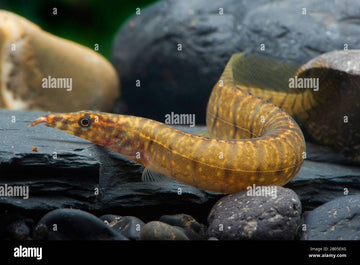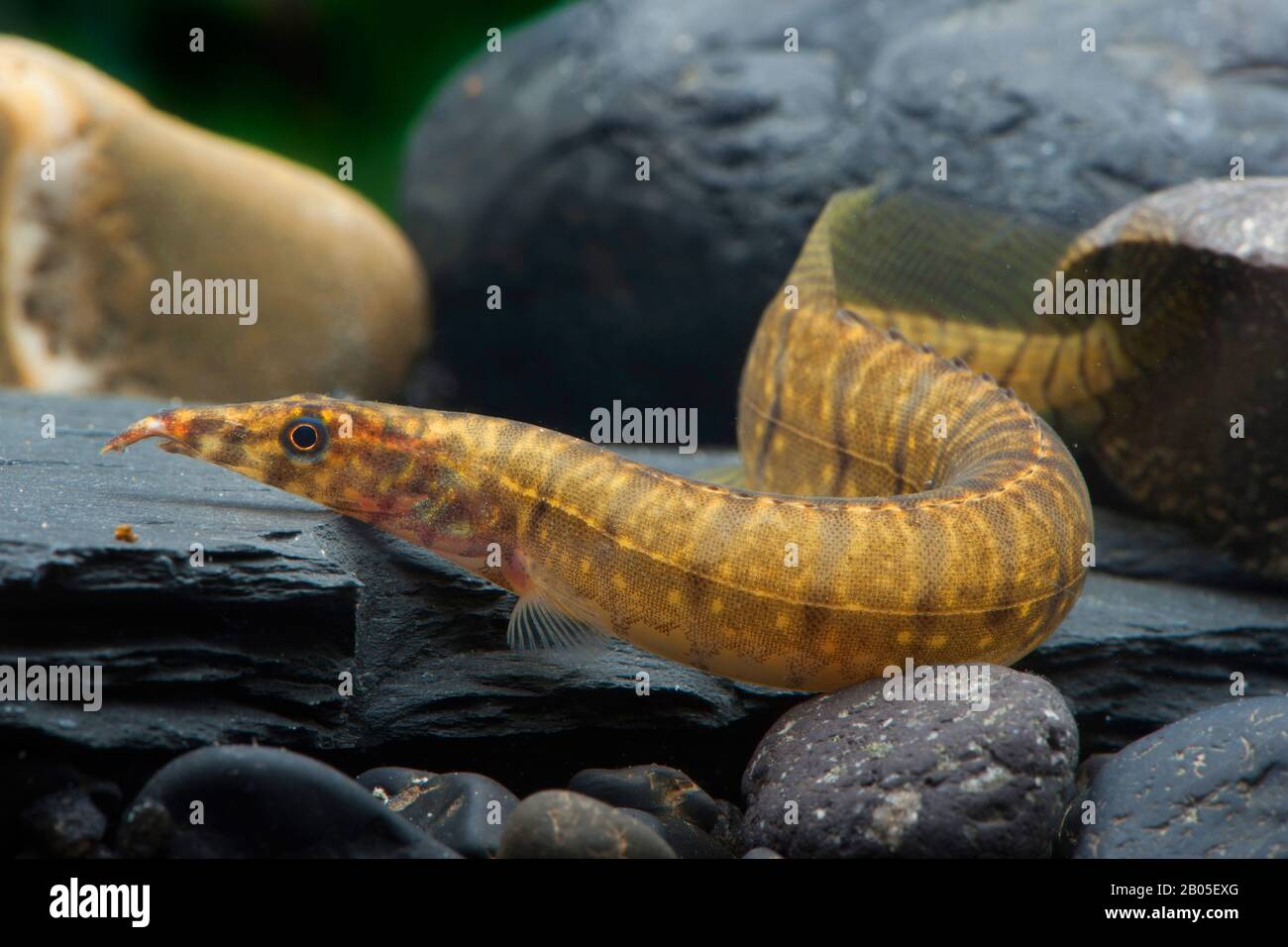Mastacembelus oatesii – Oates’ Spiny Eel (~37 cm / ~15″ max)
-
Estimated Delivery:Jan 17 - Jan 21
-
UPS Next Day Air Shipping Charges 65$

Mastacembelus oatesii – Oates’ Spiny Eel (~37 cm / ~15″ max)
📦 Description
Mastacembelus oatesii is a spiny eel species native exclusively to Inle Lake in Myanmar. Males can reach up to approximately 37 cm in length and feature a broad, short snout with large dark spots along a slender body. It has fewer dorsal and anal fin rays compared to most Mastacembelus species—typically 48–56 dorsal rays and 46–60 anal rays, with correspondingly fewer vertebrae . Unlike many of its relatives, the fins are free of spot patterns and smoothly edged, giving it a clean, elegant appearance. Due to its highly localized habitat, captive husbandry is undocumented and challenges remain unknown.
🧰 Care Instructions
While no direct data exists for M. oatesii husbandry, other Mastacembelus species provide a useful guideline:
-
Tank Size: Large setup (≥150 L / ~40 gal) with plenty of horizontal swimming room.
-
Flow & Oxygenation: Moderate to low flow, but excellent oxygenation is essential.
-
Water Parameters:
-
Temperature: 24–28 °C (75–82 °F)
-
pH: 6.5–7.5
-
Hardness: Soft to moderate
-
-
Substrate & Decor: Fine sand with buried tunnels or PVC tubes for hiding. Provide caves and driftwood for shelter.
-
Diet: Carnivorous bottom-feeder—offer earthworms, tubifex, bloodworms, freshwater crustaceans, and sinking carnivore pellets. Occasional live prey encourages activity
-
Behavior & Tankmates: Generally peaceful but may eat very small fish; best paired with larger, calm community species. Keep alone or in small conspecific groups if available.
-
Maintenance: Stable water quality is crucial—weekly partial changes (20–30%), efficient biological filtration, and minimal temperature swings.

